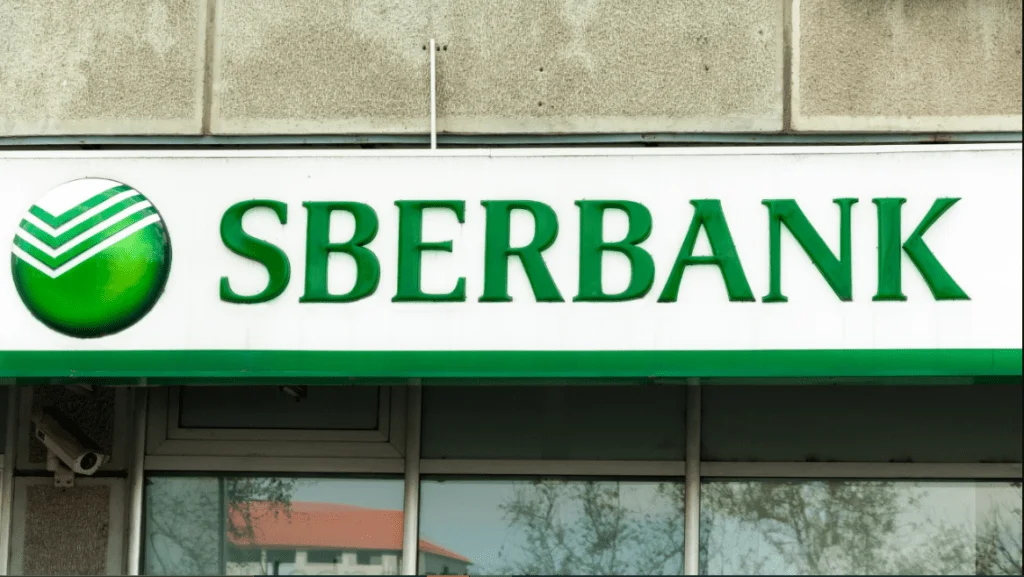Sberbank, Russia’s largest bank launched its own cryptocurrency Sbercoin following myriads of financial sanctions meted on the country by states as well as financial regulators after the invasion of Ukraine.

Since Russia’s invasion of Ukraine, the nation has been subjected to a slew of sanctions, cutting it off from the majority of its foreign currency reserves and the global financial system. Amid all the sanctions, Sberbank announced the launch of a cryptocurrency.
Sberbank’s share trading falls as a result of the war
Trading in Sberbank shares was stopped in London in early March, only days after the invasion began, and they dropped by 95%. As Western sanctions wreaked havoc on Russia’s economy, the lender was forced to shut down its European operations.
According to media sources, the Russian central bank gave Sberbank permission to produce its own cryptocurrency barely two weeks later, on March 17. As a result, sbercoin was launched on the same day.
Russia is said to be struggling to satisfy its dollar-denominated debt obligations, therefore it has announced that it would only accept payments in rubles for its electricity.
In light of this, there has been concern that sbercoin might become a discreetly accepted means of exchanging rubles for other currencies and circumventing restrictions.
According to Asheesh Birla, general manager of RippleNet, a blockchain-based payments service provider, the viability of this is disputed.
“It’s going to be really difficult for them to get traction here,” he told Insider, “since they also need a liquid exchange that will accept the Russian currency.”
Russia’s currency plummets due to sanctions
The sanctions caused the currency to plummet, prompting Moscow to impose capital restrictions. Russians hurried to preserve their foreign currency holdings, resulting in the emergence of an underground market in dollars and euros.
While Sberbank can launch a cryptocurrency, Birla points out that it may not assist in transferring funds in and out of the country.
Since exchanges utilize stablecoins like tether and USDC to trade into and out of other cryptocurrencies, they’re popular – they’re among the top five cryptocurrencies by market value, according to CoinMarketCap statistics.
Birla stated that he is not sure if Sbercoin is going to be very helpful in terms of getting liquidity in and out of Russia.
“It’s the same as placing your personal bank account on a ledger. Unless you can start trading it for other things, it’s not really valuable. And based on what I’ve seen so far, it doesn’t appear to be particularly liquid “Added Birla.
According to CoinMarketCap statistics, Sbercoin began trading at $0.0003617 on March 17 and had a trading volume of slightly under $948,000 in the first 24 hours. The currency, which mostly trades on Pancakeswap, has dropped over 90% to $0.00002211 since then, with a 24-hour trading volume of $1,248 as of 12:30 p.m. ET Friday.
When Sberbank began experimenting with blockchain technology in 2020, the possibility of a Sberbank-issued cryptocurrency was initially mooted. According to a local news source, its CEO Herman Gref suggested at the time that the bank would consider launching sbercoin in 2021.
Sberbank’s vice chairman indicated in September that the bank intended to register its blockchain ambitions with the Russian Central Bank. However, it hasn’t said anything about its crypto ambitions since then, and it hasn’t responded to an Insider request for comment.
Even though there has been no evidence of this, the US and its allies are concerned about the use of Bitcoin to avoid financial sanctions on Russia.
According to Chainalysis analysis, ruble-to-crypto trade volume has declined since the invasion began, when it jumped over 900 percent to over $70 million in five days – its biggest level since May 2021.
In their 2021 research, Chainalysis discovered that Russia ranked first in the world for crypto adoption. As a result, large amounts of ruble-denominated crypto-trading may not always indicate attempts to circumvent sanctions.
